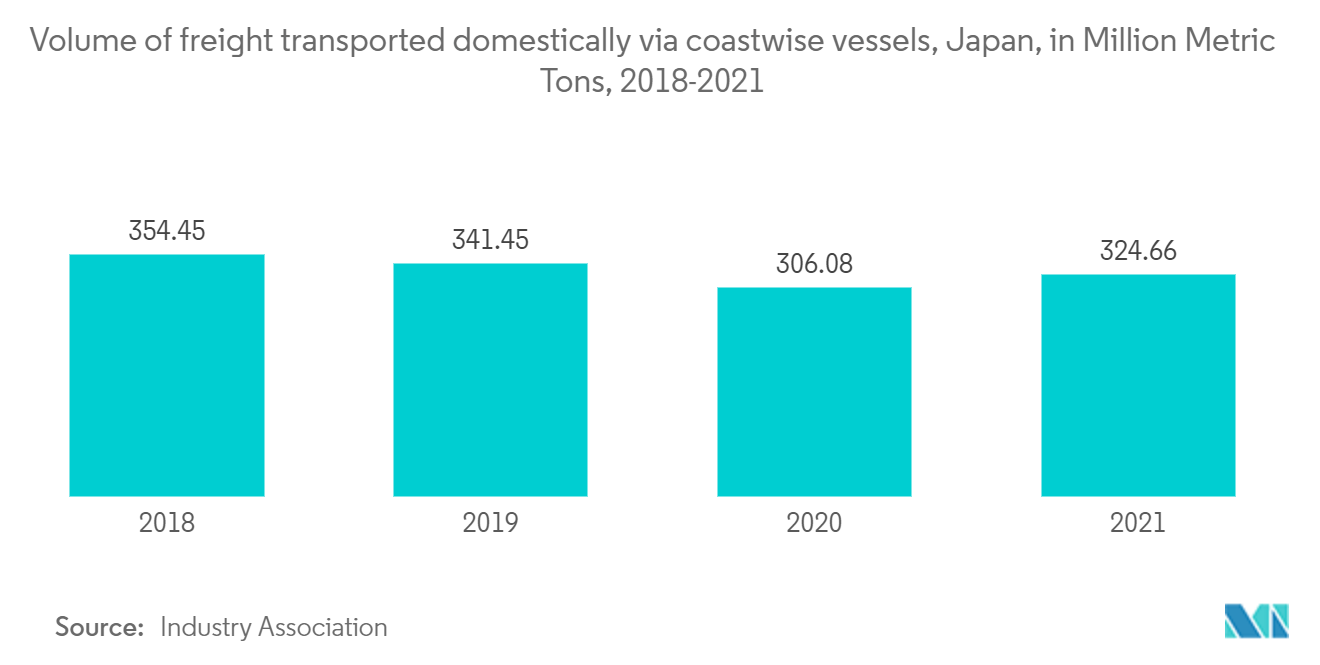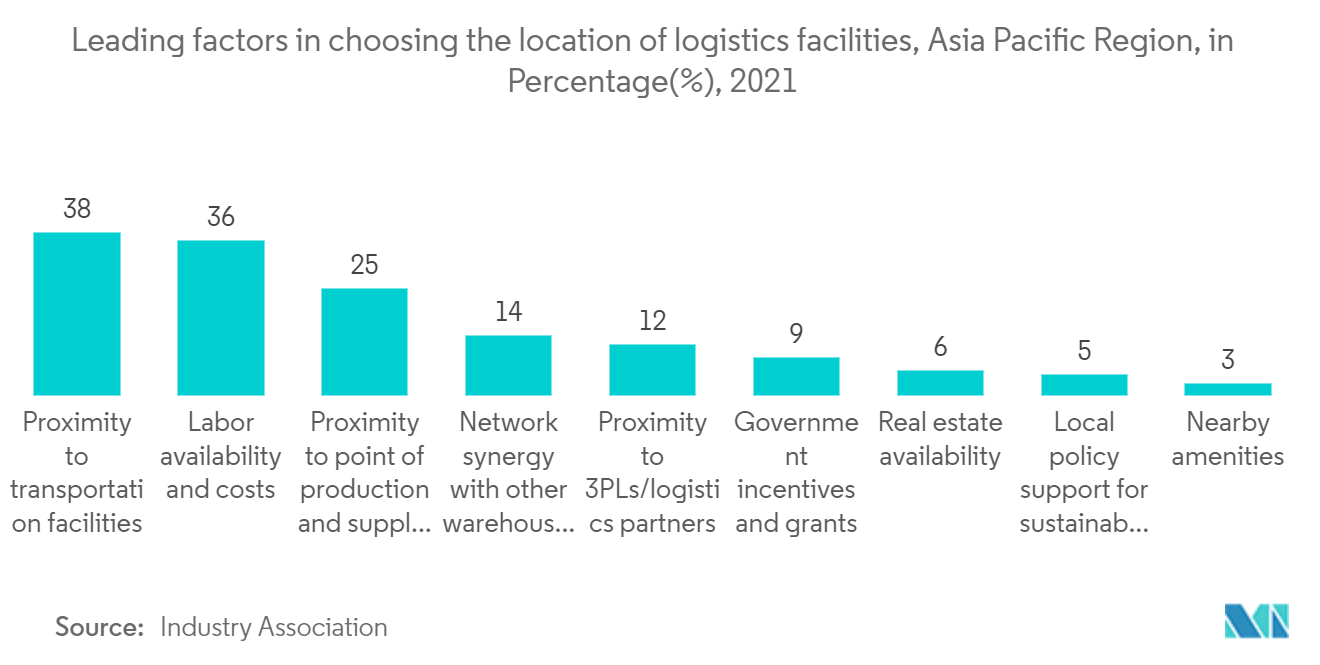Market Trends of Asia-Pacific Cold Chain Logistics Industry
This section covers the major market trends shaping the APAC Cold Chain Logistics Market according to our research experts:
Decreasing Volume of Domestic Water Freight Transport in Japan
- Japan handles more than 4.7 billion tons of domestic freight every year. Every mode of transport, including water, rail, air, and road, fulfills a crucial role in the economy. While cargo transport relies primarily on demand created by manufacturing industries and consumption, transportation creates demand for trucks and vehicles of any kind, including drones.
- Rapid developments in automation are taking place in Japan. The Japanese logistics industry suffers labor shortages, and the existing drivers are rapidly aging, thereby threatening to increase the fraction of transport costs in the sale of goods.
- Trucking and coastal shipping are the Japanese logistics industry's dominant modes of transport in terms of yearly payload distance. Railway and air transport are also used for transporting goods. However, despite the railway network being highly efficient for the transport of people, most logistics facilities, warehouses, and factories are better connected to roads.

Increased Number of Refrigerated Warehouses
- The COVID-19 pandemic has resulted in a significant change in the supply chain outlook, enabling the growing usage of digital high-end technologies to attain operational efficiency along with health concerns. The changing logistics industry outlook, requirement for substantial cost optimization, and optimum inventory management are anticipated to support the growth of the Asia-Pacific cold chain logistics market.
- Several warehouses comprising cold chain systems are designed to ensure the ideal storage and transportation conditions for temperature-sensitive products. Multiple export industries are now dependent on the vital links provided by cold chain solutions.
- Businesses are investing millions of dollars in their cold chain operations to create effective, efficient, and reliable processes, as end-to-end cold chain security is the weak link in the system. Moreover, the number of refrigerated warehouses is increasing due to a surge in demand for food and pharmaceutical products in the Asia-Pacific region. Therefore, an increase in refrigerated warehouses is anticipated to boost the growth of the Asia-Pacific cold chain logistics market.


